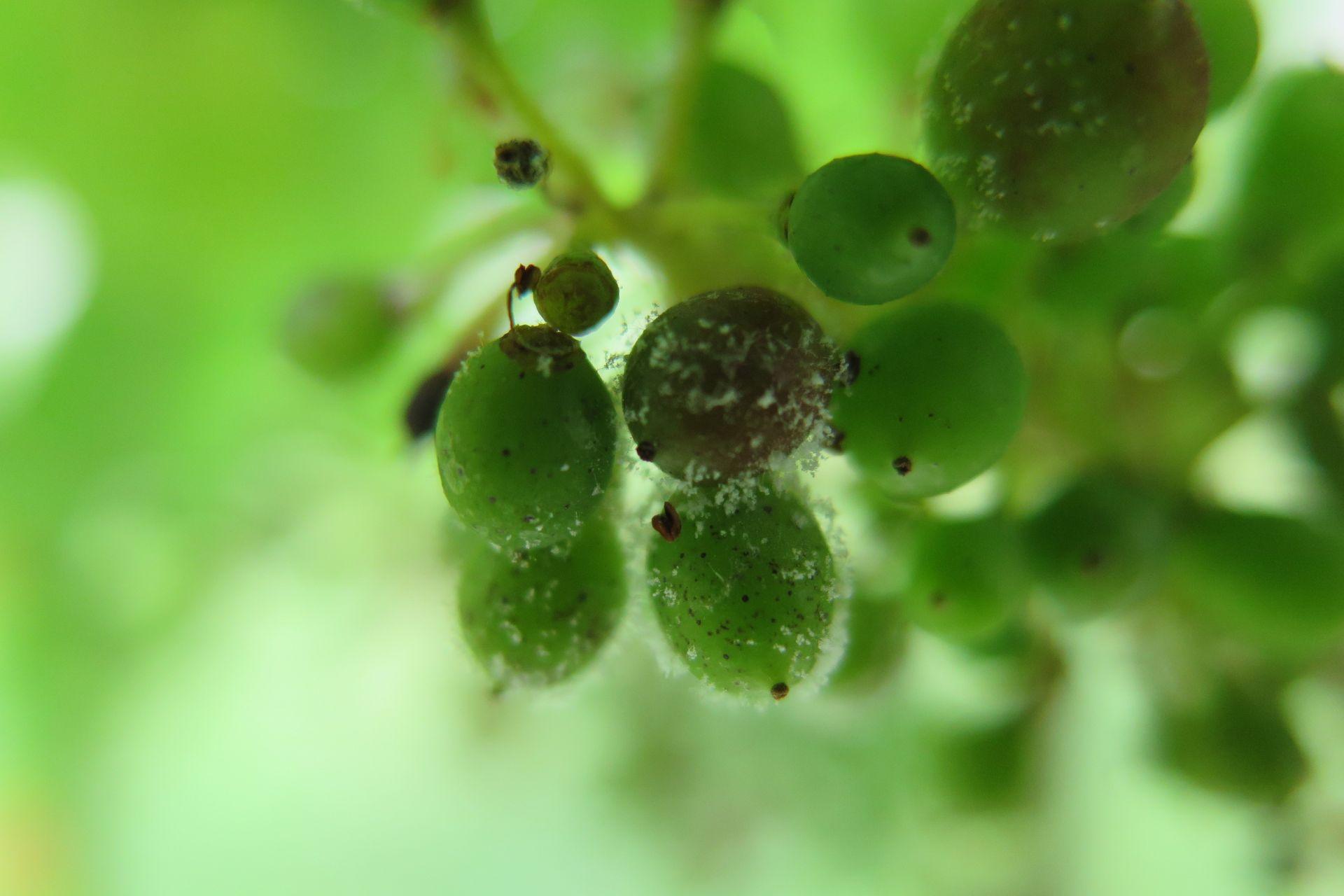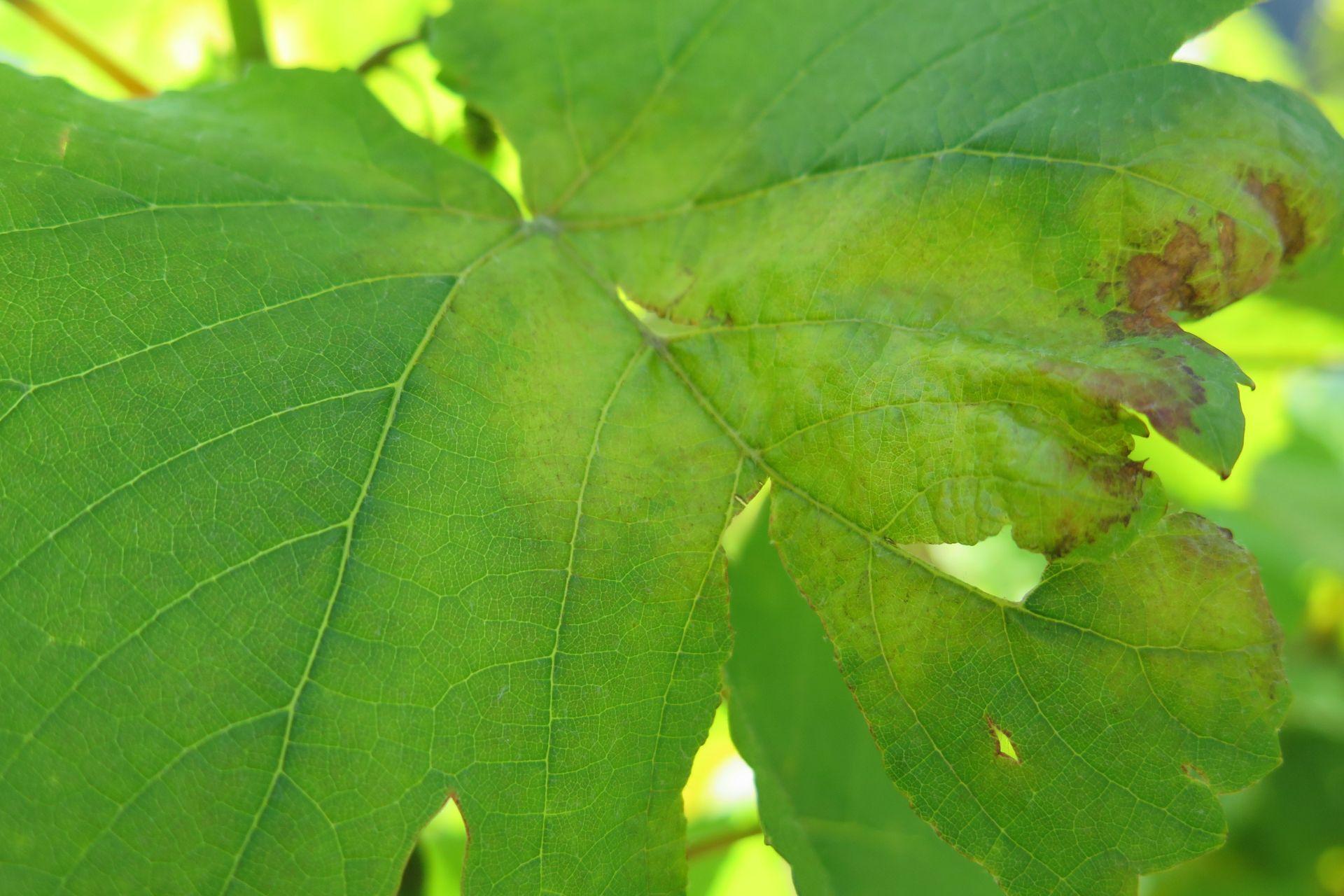
About Downy Mildew of Grapevines
Grapevine downy mildew (Plasmopara amurensis, Plasmopara viticola) is the most feared cryptogamic, or commonly fungal, disease for a long time. There is not a farmer who has not encountered it and who has not fearfully searched for it with his eyes as he passes between the rows, even now that precision agriculture deludes him with its surveys.
The farmer has even developed an anxious attitude towards this disease, so much so that for fear of the first signs, those typical oil spots or those whitish efflorescences that appear unexpectedly on the leaves, he easily indulges in treatments with anti-downy mildew products. This is the wrong way to remove this problem, which now burdens the psyche as well as the crop, due to the legacy of almost 150 years since the existence of this disease appeared, halving wine production throughout the European continent.
How to recognize Downy Mildew of Grapevines (in time) and many other “how to's” and “what to's”
In truth, the farmer has never been told much, more to manage him than to support him, so much so that anxiety about vine downy mildew manifests itself in a thousand questions, including ‘how to recognise vine downy mildew’, which stems from another legacy: the visual approach rather than the interactive one of when we then started talking about prevention or preventive defence strategies.
The ‘how to do’ and ‘what to do’ follow each other in powerful tension as in a trapper's music or a rapper's song Fighting Downy Mildew of Grapevines: how to defend against grapevine blight (ha) what to do in case of grapevine blight (ha) how to stop grapevine blight (brr)... how to fight downy mildew naturally, what to do to stop vine downy mildew (ha), what causes vine downy mildew (brr), what does vine downy mildew (brr) do, when does vine downy mildew (ha) end (when, when), when to treat, what products to use against vine downy mildew (ha), how to treat vine downy mildew (ha), how to disinfect vine (ha). The truth is that this flow of spontaneous questions well shows how knowledge in the agricultural world is deficient and has generated chaos.
The antifungal action is not the fungicide: how to combat Grapevine Downy Mildew
Still on the subject of knowledge, farmers often do not distinguish between anti-fungal action and fungicide because they are strongly privileged by another heritage, in this case a cultural one, where agriculture seems to be made up of fights, attacks, culling and of products for defence or that kill insects, of herbicides for weeds ... and where in the case of downy mildew the (fungal) infection suggests the disinfectant. Rather than worrying about the mechanism of action often confused with the class of drug, capable of inhibiting the growth of fungal organisms, we would like to point out that the evolutionary step for agriculture lies in the word rebalancing, but this presupposes an appropriate technology capable of operating as it does in Nature: BioAksxter®.
Plants and soils also benefit from this balancing act. No longer are plants literally drugged by pesticides, but reactive ones. BioAksxter® acts as a bio-sensor capable of making plants produce antibodies, i.e. proteins capable of attacking fungi, viruses, and bacteria.

How to prevent Downy Mildew of Grapevines: what the farmer doesn't know
We have just suggested that the prevention of blight relies on balances, or rather, the reconstitution of lost balances, and we add that balances are the creative tendency of Mother Nature, above all, that they rely on the activity of the earth's magnetic field, as the planet is the ‘mother cell of every organism’.
What the farmer doesn't know, and not just him because this is new scientific evidence from our AXS M31 Research Centre, is that the so-called vegetative awakening or vegetative revival occurs as a result of a precise command from the planet that can be detected using specific oscilloscopes. This is a sound-chromatic waveform that functions like a tuning fork on which successive phenological phases are tuned.
In short, the planet is no accident, it was built with precise laws and therefore we cannot deviate from them by trying to administer contaminants to eradicate fungal or other phytopathologies.
Phenological phases and symptoms of Grapevine Downy Mildew
In contravention of these natural laws, phenological development is in turn conditioned by the alteration of weather patterns, which will be more or less affected by the weather, with the result that symptoms become increasingly uncontrollable and the management of phytosanitary vine defence impossible.
This fungal phytopathology can affect all the green organs of the plant, but the greatest damage is certainly located on the bunch, in the period between the pre-flowering phase and the veraison phase. Although, to be fair, bad weather no longer spares anything, neither shoots, nor inflorescences, nor suckers, nor shoots.
Specifically, the infection occurs from overwintering spores in the soil called oospores, which under favourable conditions of temperature and humidity generate zoospores, which penetrate the basal leaves and give rise to the primary infection.
This phase does not cause any serious damage to the crop, but the spores germinate (an increase in temperature favours the maturation of the oospores), exponentially increasing their number and attacking the rest of the vegetation by releasing zoospores, thus initiating the secondary infection that causes considerable damage to vegetation and production.
In particular, in rainy and humid years, optimum conditions occur for the development of secondary infections that affect all parts of the plant, including the fruit, showing browning with consequent necrotisation of the tissues (larval downy mildew, i.e. without the emission of mould) up to, in the most serious cases, the death of the plant.
We cannot say that this phytopathology has a true epidemiological cycle as the spores can remain in the soil for several years, thus prolonging the incubation period and multiplying re-infections.
![]()
Mosaic downy mildew typical of late infections
Returning to the subject of balance, whether in the biological, vegetative, or environmental sense, even in the context of simplifying pest control defence, it is always BioAksxter® that shines because its innovation finds it perfectly in line with planetary laws.
BioAksxter® shines, ready to solve the problems of pollution and contamination, not least that of phytosanitary residues in the musts (we say this to those who choose to pursue the path of terror instead of terroir). BioAksxter® also shines for those who want to inhibit fungal infection in a natural way, happy to make the vineyard happy, to protect their own health and to do no further damage to the environment.
Why certain plant protection products that cure downy mildew no longer work
The loss of efficacy of technical means, whether systemic or cover crops, against peronosporic infectious load and varietal susceptibility to fungal diseases, especially at times of peak infectious pressure, means that the farmer is always on the lookout for more effective curative products and formulations.
Rather than predisposing factors to disease or an aggressive return of the pathogenic fungus, one should speak of biological impairment of the balance; in fact, continuous chemical treatments eliminate the manifestation of the infection/disease, but not the source (the disease programme). The pathogen, therefore, mutates by generating fungal resistance. So even where downy mildew control used to be possible through the use of plant protection products, it is no longer possible.

How to eliminate grapevine downy mildew
Innovative solution for grapevine downy mildew
BioAksxter® M31 Viticulture is the innovative solution in vineyard cultivation because its action is directed towards restoring the balance. Thus, the proliferation of the disease is kept under control, keeping it below the danger threshold, until it is resolved. No more weak plants. Goodbye resistance phenomena. Goodbye reduction in photosynthetic activity. But also, goodbye to forecasting models and the old agronomic rules (rule of two 15s, rule of three 10s, etc.) which global pollution of environmental matrices (soil, water, air) has totally disrupted.
Do you realise what a rainfall can dump on vineyards? We are talking about chemical, microbiological, and radioactive contamination. Do you realise the lightning processes, their subtle effects and the changes in ecosystem functions that are put in place? That is why BioAksxter® is not just an alternative but a fundamental necessity for today's agriculture.
That's why BioAksxter® M31 Viticulture also compensates for so-called teaching years, i.e. those in which the farm suffers damage (by which we mean production and quality losses) as a result of abnormal weather patterns that are becoming increasingly problematic. Practically all vintages.
To those who like to suffer by choosing to listen to those who do not want to employ them, we can only wish them health. Instead, we can rejoice together with those who, wanting to live well, have chosen it.